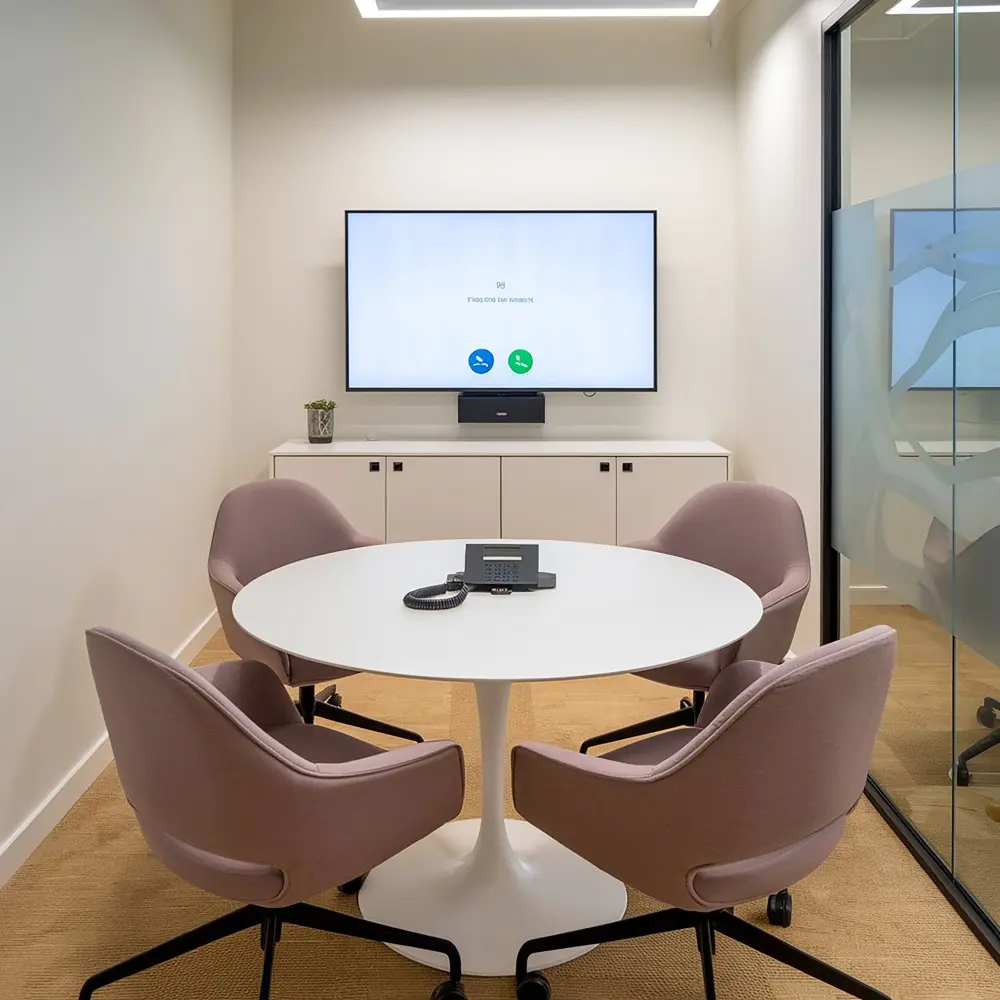The modern workplace is evolving rapidly, with businesses embracing digital transformation at an unprecedented pace. One of the biggest advancements in corporate environments is the adoption of
smart meeting rooms equipped with cutting-edge technology. These rooms are no longer just spaces to hold discussions; they are becoming hubs of efficiency, collaboration, and innovation. Here are ten reasons why this trend is set to dominate offices in 2024.

1. Enhanced Productivity & Efficiency
With integrated tools like AI-powered assistants, voice recognition, and real-time transcription, employees can conduct meetings seamlessly. The ability to schedule, record, and analyze discussions in one place eliminates manual tasks and boosts productivity. Additionally, automated workflows streamline meeting preparations and follow-ups, reducing the time spent on repetitive tasks within
smart meeting rooms.
2. Seamless Connectivity & Integration
Today’s workplaces rely on various digital tools, from project management software to video conferencing platforms.
Smart meeting rooms support seamless integration with tools like Zoom, Microsoft Teams, and Google Meet, ensuring effortless communication. This level of connectivity ensures that teams can collaborate efficiently, regardless of location, without worrying about technical issues or compatibility concerns.
3. Smart Automation & AI Assistance
AI-powered assistants can automate tasks like note-taking, scheduling, and even summarizing key points from discussions. This feature minimizes human error and allows teams to focus on strategic discussions rather than administrative tasks. Additionally, AI-driven analytics can provide insights into meeting effectiveness, helping organizations improve their communication strategies and optimize decision-making processes in
smart meeting rooms.
4. Advanced Audio-Visual Technology
High-definition displays, noise-canceling microphones, and immersive sound systems make communication clearer than ever. These features ensure that every participant, whether remote or in person, has an optimal experience. Interactive touchscreens, smart cameras that track speakers, and real-time language translation tools further enhance the user experience, making global collaboration within
smart meeting rooms more seamless.

5. Improved Collaboration & Remote Access
With the rise of hybrid work models, organizations need a space that accommodates both in-person and remote teams.
Smart meeting rooms come equipped with cloud-based tools that enable real-time document sharing, brainstorming, and interactive collaboration. Virtual whiteboards and AI-powered transcription services allow remote participants to contribute as effectively as those physically present in the room.
6. Energy Efficiency & Sustainability
Modern
smart meeting rooms are designed with energy-efficient lighting, automated climate control, and smart sensors to reduce waste. Companies looking to adopt sustainable practices benefit from reduced energy costs and an eco-friendly workspace. Intelligent power management systems automatically turn off unused devices and adjust settings based on occupancy, further promoting sustainability.
7. Enhanced Security & Data Protection
With built-in cybersecurity features such as encrypted communications, biometric authentication, and AI-powered access control, businesses can ensure the confidentiality of their discussions and protect sensitive information.
Secure data storage options also allow organizations to manage meeting recordings and notes with confidence, reducing the risk of unauthorized access or data breaches.
8. Customization & Flexibility
These spaces are no longer one-size-fits-all. Organizations can personalize them with adjustable lighting, modular furniture, and AI-driven settings that adapt to the type of meeting being held, whether it’s a brainstorming session, a client pitch, or a team huddle.
Smart meeting rooms also feature intelligent scheduling systems that optimize room usage, ensuring that resources are utilized efficiently.
9. Cost Savings & ROI
While setting up
smart meeting rooms requires an initial investment, the long-term savings are substantial. Businesses save on travel expenses, reduce meeting downtime, and improve overall workflow efficiency, leading to a high return on investment. Additionally, predictive maintenance features in smart meeting technology help prevent costly equipment failures, ensuring seamless operations.
10. Competitive Advantage & Innovation
Companies adopting
smart meeting rooms stand out as forward-thinking organizations. A high-tech environment attracts top talent, impresses clients, and fosters a culture of innovation and continuous improvement. Businesses that leverage these technologies gain a competitive edge by making faster, more informed decisions and enhancing team collaboration.

Conclusion
In 2024,
smart meeting rooms will become a standard feature in modern offices. With benefits spanning from enhanced productivity to cost savings and sustainability, organizations that invest in them will gain a significant edge in the evolving corporate landscape. If your business has yet to adopt this trend, now is the time to start upgrading your workplace for the future. By embracing
smart meeting rooms, companies can create an environment that fosters creativity, efficiency, and seamless collaboration, setting the stage for long-term success in an increasingly digital world.








